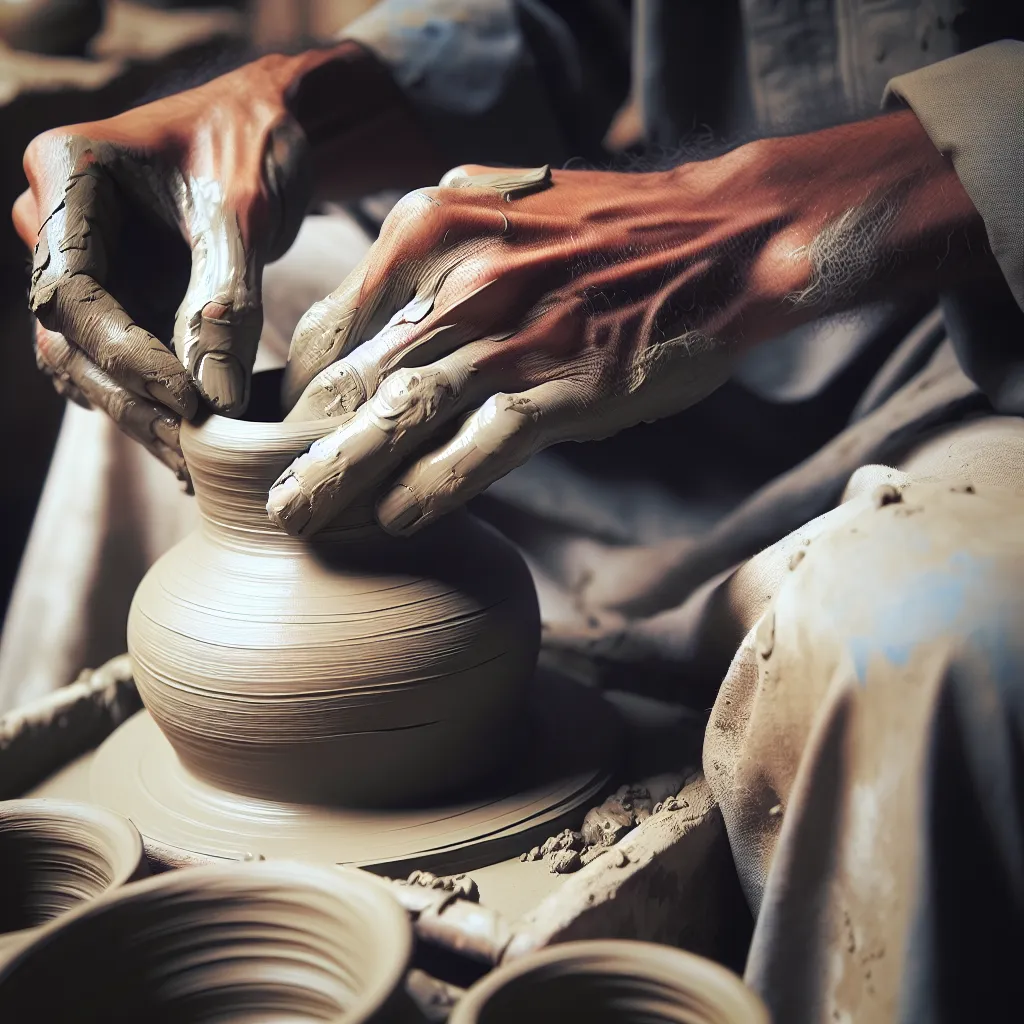The History of Handmade Art
The history of handmade art is a rich tapestry woven through the fabric of human civilization. From ancient cave paintings to intricately carved sculptures, the tradition of creating art by hand has been a fundamental part of our cultural heritage.
In ancient times, handmade art served as a means of communication, storytelling, and religious expression. The earliest forms of handmade art can be traced back to prehistoric times, where early humans used natural materials to create cave paintings and intricate carvings. These artifacts provided insights into the beliefs, customs, and daily life of our ancestors.
As civilizations evolved, so did the techniques and styles of handmade art. From the exquisite pottery of the ancient Greeks to the delicate silk embroidery of the Chinese dynasties, each culture developed its own unique forms of handmade art, reflecting their traditions, beliefs, and values.
During the medieval and Renaissance periods, handmade art flourished in the form of illuminated manuscripts, tapestries, and hand-painted religious icons. Skilled artisans devoted their lives to mastering their craft, and their works became treasured masterpieces that continue to inspire us today.
With the advent of industrialization, the handmade art faced challenges as mass production and mechanization replaced traditional craft techniques. However, the Arts and Crafts movement of the 19th century sought to revive the value of handmade art, emphasizing the beauty of handcrafted objects and the importance of preserving traditional artisanal skills.
Today, the history of handmade art continues to thrive as contemporary artists and makers embrace traditional techniques while also incorporating modern innovations. The resurgence of interest in handmade art reflects a growing appreciation for the uniqueness, authenticity, and human connection embedded within each handcrafted piece.
In conclusion, the history of handmade art is a testament to the enduring creative spirit of humanity. It has transcended time and continues to be cherished for its ability to convey the essence of human experience through the skillful manipulation of materials and the boundless imagination of the artist.
DIY Crafts: From Hobby to Lifestyle
DIY crafts, short for do-it-yourself crafts, have evolved from a simple hobby to a way of life for many individuals. The art of handmade items has gained popularity in recent years as people seek to express their creativity and individuality through unique, personalized creations. From homemade jewelry and clothing to handcrafted home decor and gifts, DIY crafts cover a wide range of artistic endeavors.
Engaging in DIY crafts offers a sense of fulfillment and satisfaction, allowing individuals to disconnect from the digital world and immerse themselves in the tangible process of creating something with their own hands. It provides an avenue for self-expression and creativity, fostering a deep sense of accomplishment with each completed project.
Moreover, the rise of social media and online platforms has facilitated the sharing of DIY craft ideas and techniques, leading to a vibrant community of makers and artisans. This sense of community has transformed the DIY craft movement into a lifestyle, where individuals not only create handmade items for personal enjoyment but also as a means of connecting with like-minded individuals and supporting the handmade market.
As more people embrace the DIY lifestyle, the demand for high-quality handmade goods has increased, encouraging artisans to refine their skills and explore new crafting techniques. This surge in interest has also led to a renewed appreciation for traditional crafts and artisanal methods, preserving heritage skills that might have otherwise been forgotten.
In conclusion, DIY crafts have transcended the boundaries of a mere hobby, evolving into a way of life that encompasses creativity, community, and a dedication to the art of handmade. Embracing the DIY lifestyle offers individuals the opportunity to infuse their surroundings with unique, personalized creations while fostering a deeper connection to the world of crafting.
The Artisan’s Touch: Celebrating Handmade Creations
When it comes to the art of handmade crafts, there is an undeniable allure to the artisan’s touch. The celebration of handmade creations goes beyond the mere act of crafting; it pays homage to the skill, dedication, and individuality of the artisans behind the pieces. The value of a handmade item lies not only in its functionality or aesthetics but also in the story it tells and the connection it fosters between the creator and the recipient.
Each handmade creation bears the imprint of its artisan, reflecting their expertise, creativity, and passion. Whether it’s a meticulously crafted piece of jewelry, a carefully stitched quilt, or a hand-thrown ceramic vessel, the artisan’s touch is evident in the attention to detail and the distinctiveness of the finished product. This personal touch infuses the item with a sense of authenticity and uniqueness that mass-produced goods simply cannot replicate.
Furthermore, the process of creating handmade crafts allows artisans to infuse their personality and experiences into their work, resulting in pieces that are rich with character and depth. The imperfections and subtleties inherent in handmade items add to their charm, serving as a reminder of the human hands and heart that brought them to life.
By celebrating the artisan’s touch, we not only honor the traditions and heritage of craftsmanship but also support individual artisans and their commitment to preserving the art of handmade. The value of these creations extends far beyond their material worth, embodying a spirit of creativity, authenticity, and human connection that enriches both the creator and the admirer.
Mastering the Craft: Exploring the Beauty of DIY
Mastering the craft of do-it-yourself (DIY) projects is a captivating journey that allows individuals to explore their creativity while creating unique and personalized pieces. The art of handmade crafts opens a world of possibilities, offering a sense of accomplishment and pride in the finished product. It encompasses a wide range of disciplines, from woodworking and sewing to pottery and jewelry making, allowing enthusiasts to find their niche and hone their skills.
One of the most enchanting aspects of mastering the craft of DIY is the beauty of creating something with your own hands. There is an undeniable charm and authenticity in handmade items that simply cannot be replicated by mass-produced goods. Each brushstroke, stitch, or carve tells a story of dedication and passion, making the end result not just an object, but a piece of art infused with the creator’s essence.
Moreover, delving into the world of handmade crafts provides a deeper connection to the objects we use in our daily lives. Whether it’s a hand-knitted scarf, a hand-carved wooden spoon, or a hand-painted vase, the time and effort invested in crafting these items imbue them with a profound sentimental value. Mastering the craft of DIY empowers individuals to infuse their surroundings with pieces that hold personal meaning and significance.
In addition to the emotional and aesthetic allure, mastering the art of handmade crafts offers the satisfaction of acquiring new skills and expertise. As individuals delve deeper into their chosen craft, they learn the intricacies of the medium, develop problem-solving abilities, and refine their techniques. The journey of mastering a DIY craft is not just about the end product, but also about the continuous growth and improvement as an artisan.
In conclusion, exploring the beauty of DIY through mastering the craft of handmade projects is a deeply rewarding pursuit. It enables individuals to express their creativity, infuse their surroundings with personalized pieces, and embark on a journey of continuous learning and growth. The allure of DIY craftsmanship lies not only in the products themselves but also in the profound sense of accomplishment and connection it brings to both the creator and the consumer.




